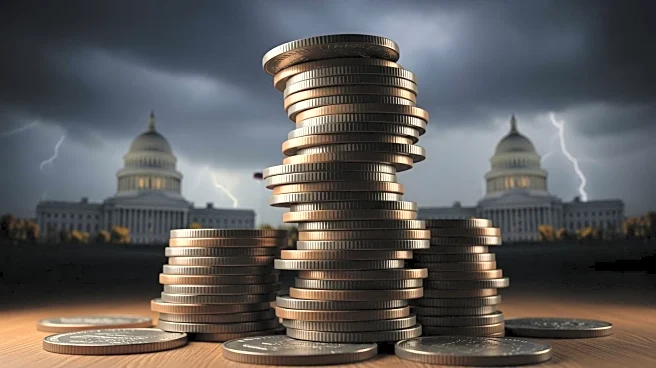What's Happening?
The U.S. national debt has surpassed $38 trillion, marking the fastest accumulation of a trillion dollars outside the COVID-19 pandemic. This increase coincides with a federal government shutdown, which has further strained the economy. The Joint Economic
Committee estimates the debt has grown by nearly $70,000 per second over the past year. Economists warn that rising debt levels could lead to higher inflation and borrowing costs, affecting consumer purchasing power and economic stability.
Why It's Important?
The rapid growth of the national debt highlights significant fiscal challenges for the U.S. government. Higher debt levels can lead to increased interest costs, which may crowd out essential public and private investments. This situation poses risks to economic growth and stability, as well as potential impacts on consumer spending and business investments. The government shutdown adds to these challenges by delaying fiscal policy decisions and economic activities.
What's Next?
The ongoing government shutdown continues to impact economic activities, and there is pressure on lawmakers to address the fiscal challenges. The Treasury Department and other stakeholders may need to implement measures to stabilize the economy and manage the debt effectively. Political leaders are expected to negotiate solutions to end the shutdown and address the debt crisis, but the path forward remains uncertain.














